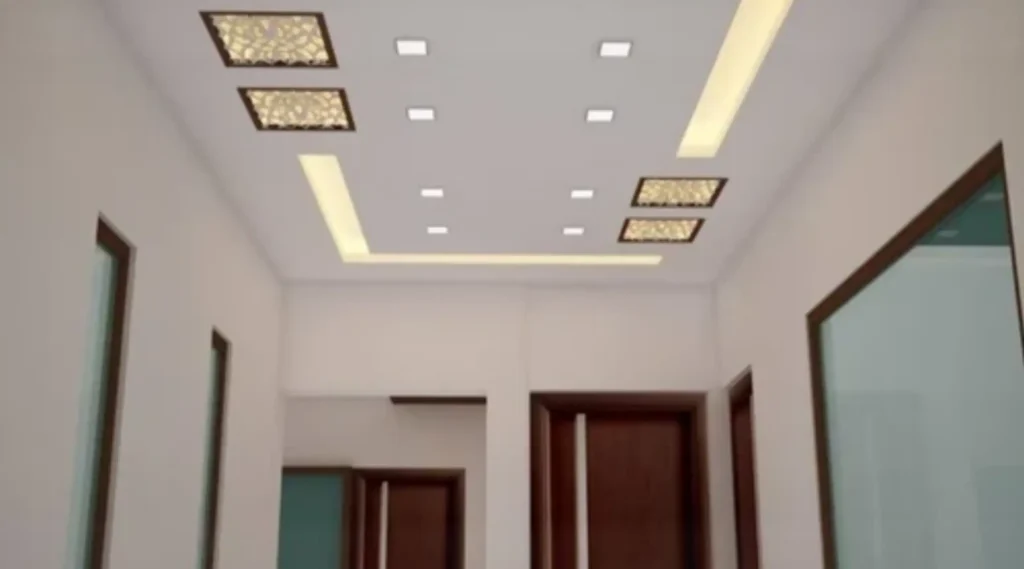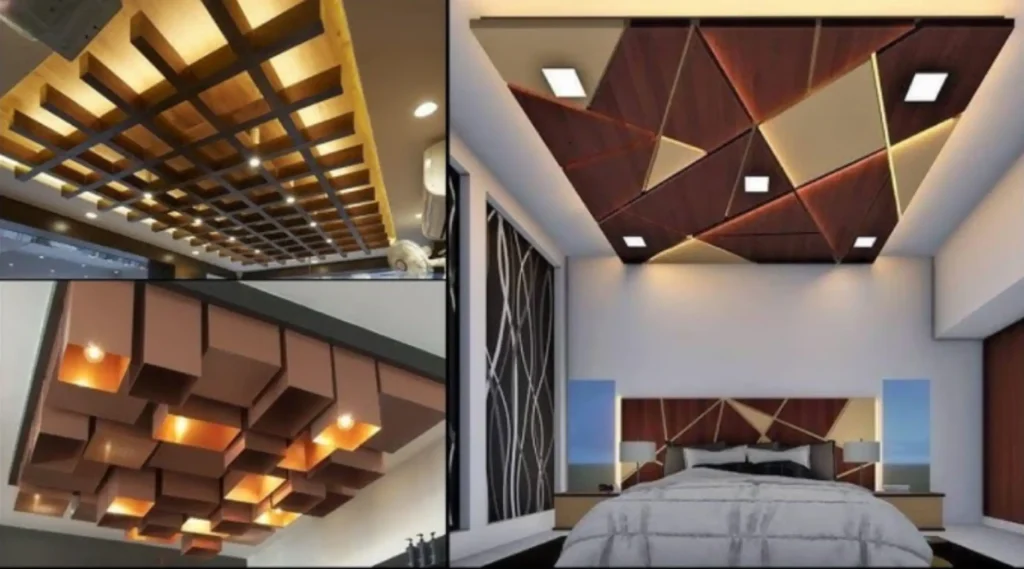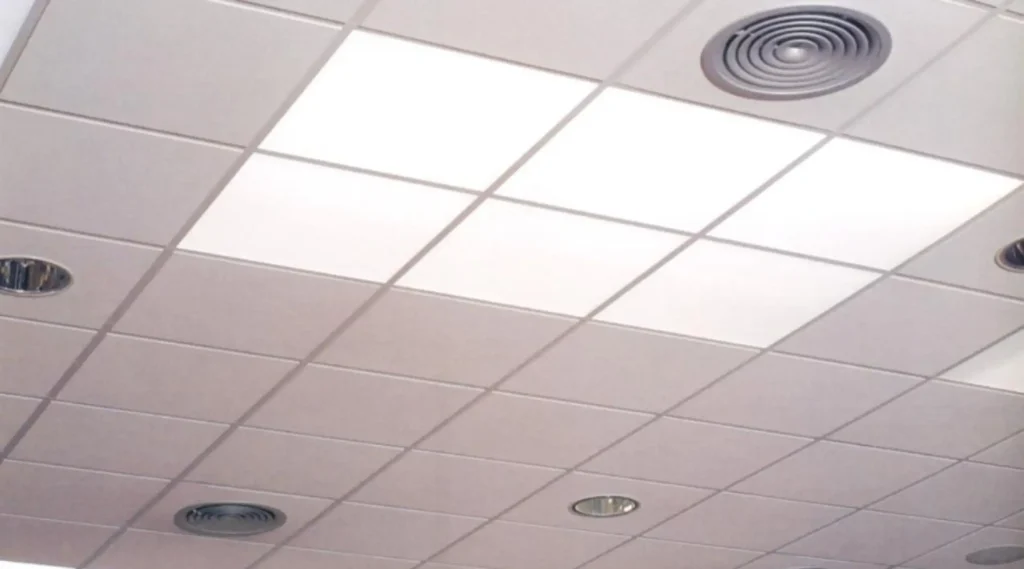A false ceiling for a hall can create a significant first impression for anyone who visits your home. A well-designed false ceiling makes people remember the luxury and sophistication your house offers for a long time.
Do you think that a false ceiling is just used for aesthetic purposes? No, it is more than just a decorative element and serves as a functional element. This blog takes an in-depth look at the false ceiling and its applications.
What is a False Ceiling?
A false ceiling is a secondary ceiling suspended below the main ceiling using suspension cords or struts. These ceilings, including Suspended Ceiling Tiles, are made from a wide range of materials, offering both functional and aesthetic benefits. They enhance the building’s appearance, thermal insulation, fire safety, and energy efficiency
Importance of False Ceiling in Hall
- Hides unsightly wires, pipes, and ductwork, and creates a clean and organised look.
- Offers design flexibility with various materials and finishes that enhance the hall’s overall appearance.
- Absorbs sound and reduces the noise levels and echoes.
- Regulates room temperature, maintains warmth, and reduces the cost spent on energy.
- It offers good insulation against fire and hot weather conditions, enhancing safety.
- Provides easy access to the space above the false ceiling for maintenance and repairs.
- Enhances the overall looks and feel of the space, allowing creative lighting options in the recessed area.
Types of False Ceilings
POP False Ceiling

These are false ceilings that are made of Plaster of Paris. The POP is mixed with water to form a paste consistency and is moulded into different shapes and designs for ceiling purposes.
It gives a sleek and smooth appearance, without sacrificing the durability and insulation properties. However, it is heavy and may require additional support, can develop cracks over time, and is complex to install.
POP False ceilings are ideal for residential and commercial buildings where intricate design is crucial.
Gypsum False Ceiling

This false ceiling is made from gypsum boards that are lightweight and offer smooth finishes. The gypsum boards are fixed with a metal frame to create a suspended secondary ceiling, making it one of the easiest ceiling types to install.
It offers good insulation properties against fire and external noises and is easy to clean and maintain. However, it has its disadvantages when it comes to durability, moisture sensitivity, and aesthetic options.
It is ideal for residential and commercial buildings where fire and sound insulation is crucial, as well as in dry, temperature-controlled places.
Wood False Ceiling

These are wooden false ceilings made from natural wood, plywood, or MDF (Medium Density Fiberboard). This type of false ceiling is suitable for the living room as it adds an elegant and natural look to the space and can be customized with different textures and finishes
It provides warm, luxurious, and customizable looks, and protects the structure from all sorts of fire and external noises. However, it is more expensive, heavy, and requires frequent maintenance.
It is used for upscale residential and commercial spaces, offices, and places where luxury looks are priorities.
Metal False Ceiling

Metal ceilings are generally made of aluminium, steel, or tin panels that offer a sleek and modern finish. These metals are typically lightweight and easy to install, giving a contemporary look.
It offers good resistance against moisture, fire, and corrosion, making it more durable and reducing maintenance costs. The metal surfaces reflect light, enhancing illumination to provide a clean and sophisticated look. On the downside, it does not offer the necessary noise insulation, warm appearance or customised looks compared to other ceiling types.
This ceiling is suitable for modern commercial buildings, offices, industrial spaces, and high-tech buildings.
Fiber False Ceiling
This ceiling is made from mineral fibre or fibreglass, which are lightweight and can be installed in a grid system or fixed directly to the ceiling. They are available in a wide variety of patterns and textures.
It offers good insulation against sound and fire and is a more cost-effective option compared to other false ceilings. On the downside, it is less durable compared to metal or wood. It offers more artificial looks and can be easily damaged due to humid conditions.
It is ideal for commercial and industrial spaces such as offices, schools, hospitals, and theatres, where sound insulation and cost-efficiency are crucial.
PVC False Ceiling
PVC (Polyvinyl Chloride) ceilings are made of lightweight and durable plastic panels. These plastic materials are available in various colours, patterns, and finishes.
It offers high resistance to moisture and humidity and is easy to clean and maintain. It is a budget-friendly option and is easy to install and handle. However, it becomes brittle over time, especially under extreme temperatures, and may lack aesthetic appeal.
It is ideal for bathrooms, kitchens, high-moisture areas, and commercial spaces where maintaining a strict budget is crucial.
Design Considerations of False Ceiling in Hall
Room Size
The height of the hall is a crucial factor in designing a false ceiling, to ensure that the secondary ceiling does not makes the room seem more cramped. Suppose the room height istoo low, a border design around the walls or a false ceiling too close to the main ceiling can be a good option. Choose light colours and reflective surfaces to create a spacious illusion.
In the case of large spaces, double-layered ceilings with unusual shapes and bold textures can make the room more visually appealing.
Lighting
To create a luxurious atmosphere, ambient lighting or recessed spotlights can be used. Task lighting can be incorporated for specific areas to avoid dark and shadow pockets. Accent lighting can be strategically placed to highlight the architectural features and other artworks.
Durability
Choose the right materials for the false ceiling for a longer lifespan and minimal maintenance. Gypsum is a popular choice for its versatility at an affordable price, requiring low maintenance over time. PVC is another durable option to provide waterproofing and easy cleaning. However, wood and metals for false ceilings can be more expensive and require more frequent maintenance.
Budget
The budget could be a major factor in determining the type of false ceiling. Determine your budget and choose the right materials and designs to match the hall. Gypsum and PVC can be the ideal choice for budget constraints, while wood, metal, and fabrics can be used for high-end projects.
Conclusion
Providing a false ceiling for a hall enhances the overall looks and functionality. For modern looks, gypsum boards can be used, and for acoustic solutions, fibre ceiling tiles can be used. Metal ceilings are known for their durability and contemporary feel, while wooden finishes add warmth. Although this being said, the room size and the compatibility with the other features give the design a combined effect. Adding lighting, ventilation, and soundproofing makes the hall space more valuable and comfortable to the property.

